Homemade ghee is one of India’s most sacred foods, with a history that traces back 5,000 years. Ghee is the cooking fat most associated with Vedic cooking, a cooking tradition from the Vedas.
The Vedas are among the oldest Hindu spiritual texts. The large body of knowledge contained therein is understood to have come by way of revelations received by ancient sages after intense meditation.
Another way of understanding this is that Vedic cooking was passed down from the heavens.
Jump to Recipe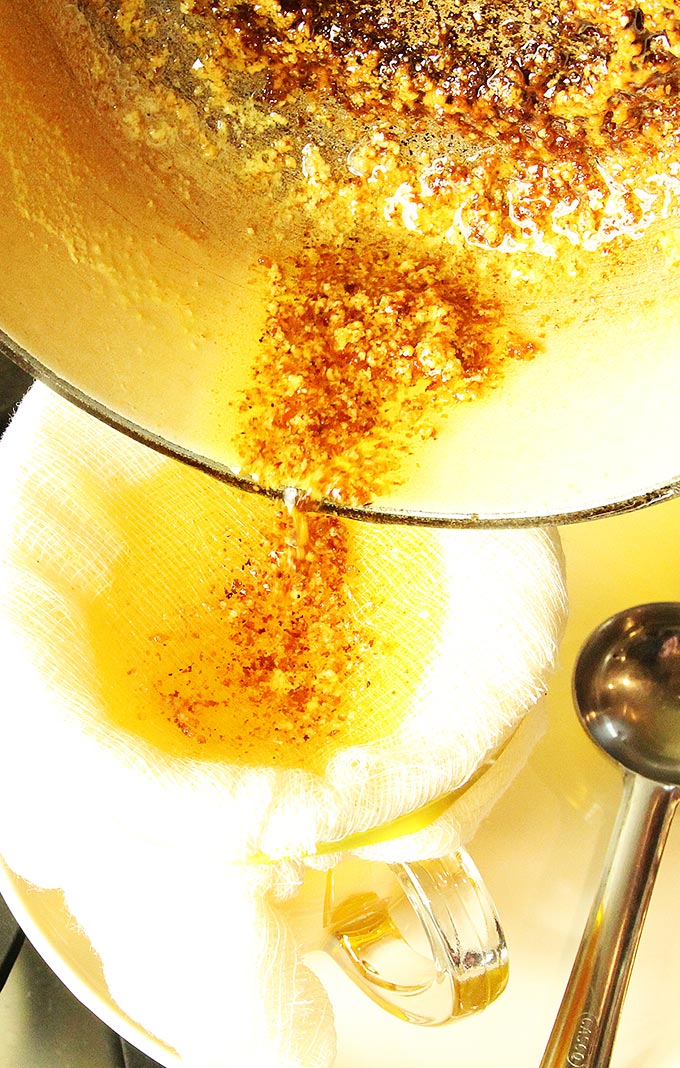
As such, even today ghee is one of the most spiritual and healing foods in India.
The golden oil made from butter has subtle qualities that are particularly good for supporting digestion.
Jump to:
This is especially important, because India’s traditional science of life, known as Ayurveda, views digestion as the root of overall health.
Ghee is distilled from butter using extended, gentle heat. The cooking technique imparts the important element of fire (angi) into the ghee.
The fire is important because Ayurveda thinks of one’s digestion as a fire. So ghee strengthens digestive fire.
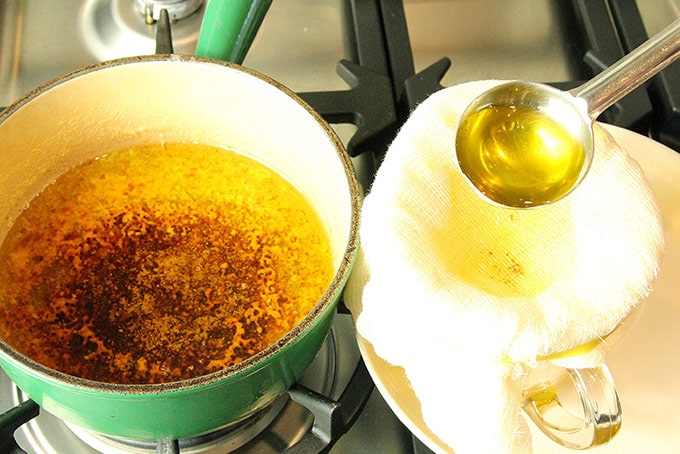
Ghee properties
Ghee has some amazing properties that make it a delight to use in the modern kitchen.
It has a very high smoke point of 485 degrees Fahrenheit (very unlike butter), so it doesn’t burn when used for cooking. Flavor-wise, its buttery and nutty flavor complements and enhances the subtle and pleasing flavors of foods cooked in it.
See: 10 Healing Benefits of Ghee
Unlike butter, ghee can be kept in the cupboard for months at a time without spoiling, because all the moisture is removed in the process of making the ghee, and it's typically moisture that makes things spoil.
Ghee is a natural, unprocessed fat, with a consistency similar to coconut oil. Being semi-solid at room temperature, it melts into a liquid easily if the room temperature warms. In India, the ghee is usually liquid because it is so warm there.
Because the milk solids are removed in the process of making ghee, it contains little to no lactose or casein, so it may be suitable for people who cannot normally digest dairy.
I cannot guarantee if you make this recipe it will be entirely free of milk proteins, but you can purchase ghee that is certified for very low quantities. Pure Indian Foods is the safest option I have found. The company says its ghee contains no more than 0.25% lactose and 2.5 ppm casein/whey.
See: How to Identify Quality Ghee, and Ghee Buying Tips
Externally, ghee is moisturizing and nourishing for the skin, and a balm for wounds and rashes. It is also a burning fuel for the countless prayer candles lit in Hindu temples every day.
A newcomer to Indian cuisine will quickly discover that ghee is a prominent ingredient in Indian sweets.
Many of these sweets are associated with rituals and temple culture. Many of these sweets are also exceptionally delicious, and I will share some of these ghee recipes in the future.
Ghee desserts you may like
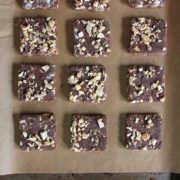
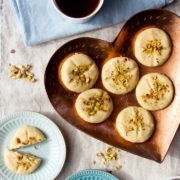
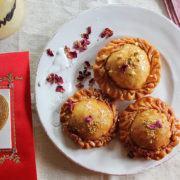
How to make Vedic ghee
Although many other recipes include much shorter cooking times, I find it takes an hour (or more) of gentle simmering of a pound of butter to coax out all of its moisture and evenly caramelize the nuggets of milk solids that drop to the bottom of the pot as it cooks.
Mine is more of a spiritual approach. It concentrates on extracting the subtle essences from the butter in accordance with Vedic traditions, and on transferring the fire element to the ghee so it can encourage good digestion.
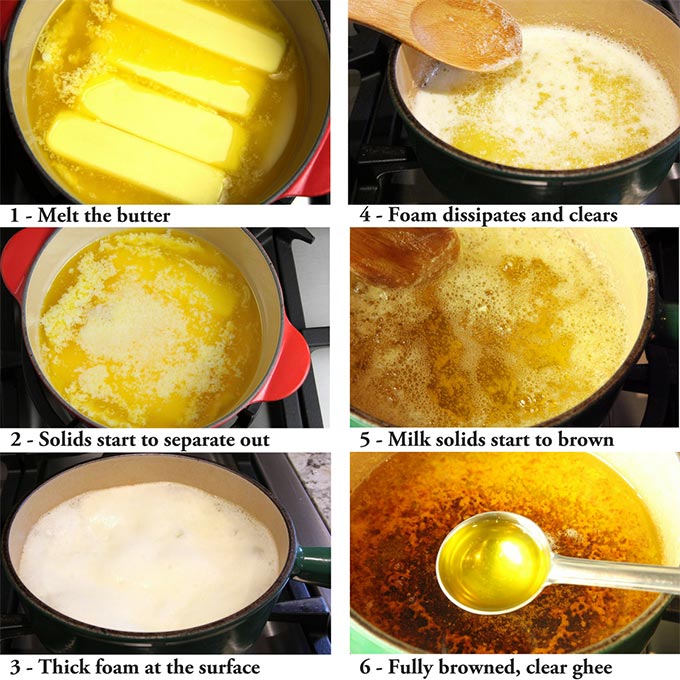
In India, my mother-in-law makes her own butter before making homemade ghee.
It begins when she collects the cream that rises to the top of her daily boiled milk. (Milk is delivered to the house daily, and it is always boiled before use.) After about a week, she has enough cream to make butter.
If you taste that cream, it has a cultured taste, but it is certainly not spoiled.
She churns the cream into butter using a wooden tool with thick ridges on the bottom to help make the butter, and a long stick handle that she spins between her palms. In just a few minutes, it turns into butter.
The remaining liquid is buttermilk. The buttermilk is a wonderful natural probiotic for drinking.
The fresh butter is removed from the buttermilk and transferred to a cooking vessel, where it is simmered into homemade ghee.
The best butter is made in the way my mother-in-law makes it, by hand. The back-and-forth action of the hand churning helps to impart a balancing quality to the butter, and subsequently the homemade ghee.
As for Vedic ghee specifically, the traditional way is to make it from cultured cream. Cultured cream is cream that has been turned into yogurt. That yogurt is then churned into butter, and the butter is simmered into ghee. There are special rules for equipment used, and techniques in the Vedic tradition that I have not talked about here.
Of course, doing all this work from scratch is asking a lot for most people today, and this is why I offer this quick method below, starting with butter purchased from the store.
How to make ghee using butter
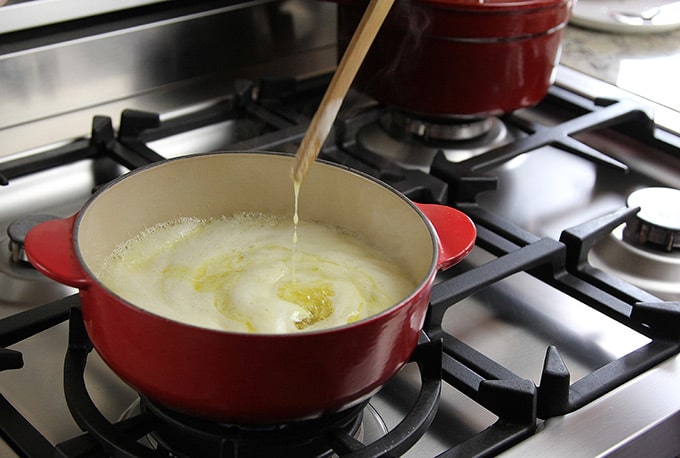
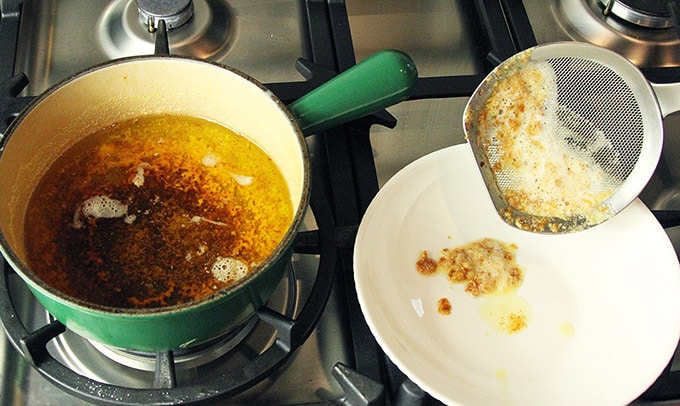
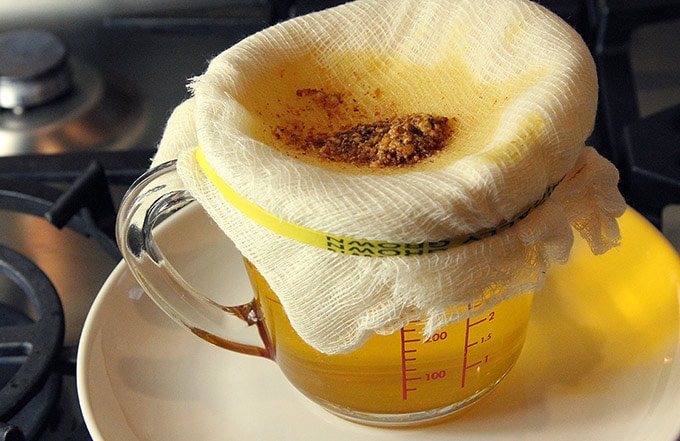
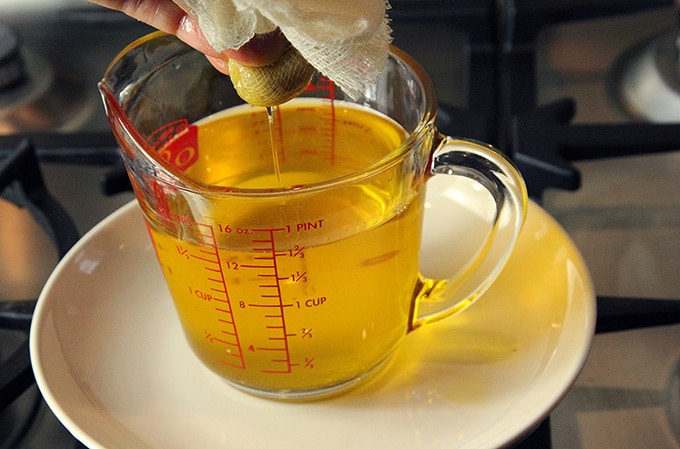
In the process of making ghee, one concentrates the butter, and extracts its essence, so I encourage you to start with the highest quality butter you can find.
I will assume that you will not follow my mother-in-law’s method, so look to purchase grass-fed and cultured butters, butter made from raw milk, or organic unsalted butters.
The very best is unsalted, cultured butter.
If possible, use an enameled cast iron saucepan, or a thick stainless steel saucepan, to make the ghee.
This will help the heat to distribute more evenly. As the heat surrounds the ghee, it helps to bring out more of the butterfat’s subtle qualities.
The process of transforming butter into ghee invites a calming sensory experience. Its scent while simmering elevates the mind, and imparts a warm and inviting feeling.
Consider approaching this cooking project with a clean appearance and a calm mind. After all, you may use this ghee for months to come, so why not make it special?
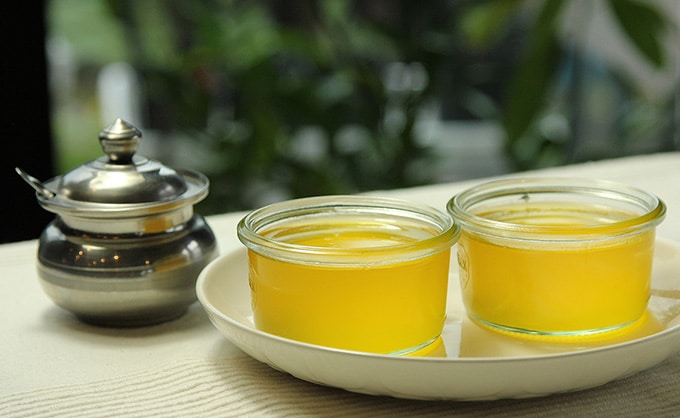
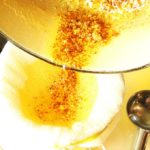
Recipe for Homemade Ghee, the Spiritual Way
Helpful Kitchen Tools:
Ingredients
- 1 pound of unsalted butter
Equipment
- You will need an enameled cast iron saucepan, or a thick stainless steel saucepan; a wooden spoon, and a fine mesh strainer or cheesecloth.
- You will also need a couple of jars to store the ghee. This recipe will yield about 1 and ⅔ cups of ghee.
Instructions
- Place the butter into a heavy-bottomed saucepan on medium-low heat. Choose a saucepan that will accommodate the melted butter with at least 2 inches on the sides to spare.
- Allow the butter to come to a boil. The ghee will begin to foam, froth, and sizzle. The sound indicates that the water is evaporating from the butterfat. The surface will be very foamy.
- After a few minutes, reduce the heat to very low. Raise the pot using a flame tamer if necessary to minimize the intensity of the heat.
- Simmer undisturbed on very low—the butter should be bubbling very minimally —for up to an hour (or longer), until the milk solids that settle on the bottom of the saucepan turn golden brown. Do not stir the bottom of the pot. There is no need to stir at all.
Butter's transformation
- As it simmers, the butter will transform. The foamy surface will slowly transform into a thin, transparent crust. The butterfat below the surface will transform from cloudy to transparent as the milk solids fully settle out on the bottom of the saucepan. Once the milk solids settle, they will begin to brown.
- The heat level, and the length of time you cook the ghee, will determine the ghee’s flavor. Watch carefully near the end. Maybe turn the pot if you notice certain areas getting darker than others. Turn off the heat when you are satisfied with the color of the milk solids. The darker the milk solids become, the nuttier the ghee will taste. Many recipes I have read suggest much shorter cook times. However, my understanding is that the longer, gentler cooking time increases the ghee’s flavor and potency. See the notes for more on this. Let the ghee rest for 5 minutes before straining.
- Strain the ghee through fine cheesecloth, a fine mesh strainer, or through 4 layers of regular cheesecloth, into a pourable container. Remove the cheesecloth and transfer the strained ghee into one or more clean glass storage jars. Cover the jars only after the ghee has fully cooled. Don’t forget to admire the gorgeous golden color of the ghee as it cools. It will transform from clear liquid, to an opaque, semisolid state.
- Retain the strained solids of the ghee separately or discard them. You can use a wooden spoon to scrape off the milk solids from the bottom of the cooking pot. See the notes section below for details on cooking with milk solids.
Notes
TO SERVE
Use your ghee as a cooking oil just as you would any vegetable oil. It will impart a mild buttery flavor to your dish. For Western cooking, try it on potatoes, or for cooking eggs or sautéing vegetables. Toss vegetables in it prior to roasting in the oven. For Indian cooking, fresh ghee is amazing drizzled on hot basmati rice. A dollop is also great mixed into any Indian dal or any soup. Adding a bit of ghee marries and enhances the delicate flavors of the aromatic spices, and tempers down the pungency of any hot chilis in the dish.GHEE STORAGE
Freshly made ghee can be stored in a cool cupboard for at least three months, in the refrigerator for six months, and in the freezer for a year. You generally don’t have to worry about ghee going bad, even beyond these times, as long as you use a clean, dry spoon to take the ghee each time so that you do not introduce any contaminants into the jar.MILK SOLIDS
Any milk solids you reserve should be used up within four days. Try adding them to cooked rice or vegetables, or as a sandwich spread.THE PERFECT SHADE OF BROWN
Yamuna Devi, writing in “The Art of Indian Vegetarian Cooking,” suggests noting the color and fragrance of your ghee. If the solids on the bottom of the pan are darker than golden brown, or if the fragrance is intense—like toasted sesame oil—the butter has cooked too long, or over too high a heat. If this is the case, Devi suggests discarding the solids. The ghee is still usable, but next time adjust the heat or cooking time. According to the Ayurvedic practitioners who make Ancient Organics ghee out of San Francisco, the perfect ghee exists between the two extremes. Too little cooking means there could still be moisture in the ghee, and it can spoil. Too much cooking means it will burn and taste overly nutty. The perfect ghee has an exquisite taste with subtle, healing qualities.GHEE VERSUS CLARIFIED BUTTER
Ghee is sometimes referred to as clarified butter, but it is not the same. Clarified butter is similar, in that its cooking process also removes the moisture from the butterfat, but clarified butter is ready as soon as the milk solids drop out, and before they start to brown. When making clarified butter, you also actively skim off the foam from the top of the pot as the butter simmers. This is not done when making ghee, as this foam transforms during the cooking process.Nutrition
If you liked this post, please share it with your friends on social media, or leave a comment below.
For more Buttered Veg lifestyle content, follow me on Pinterest, Facebook, Instagram, and YouTube.
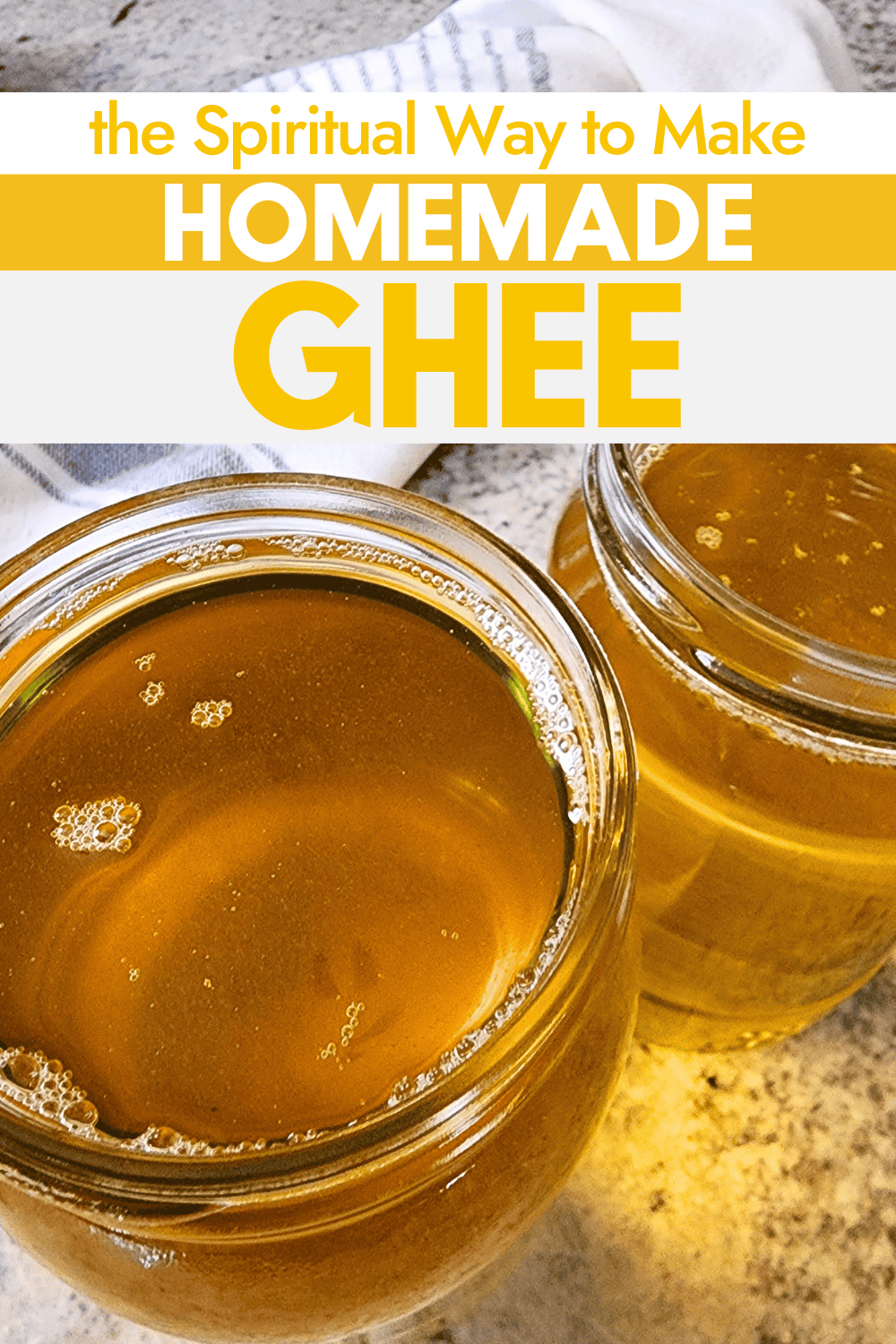

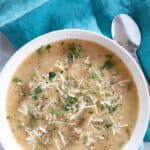
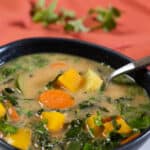
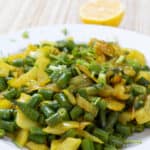
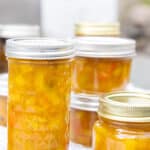
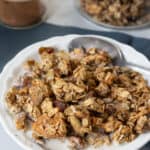
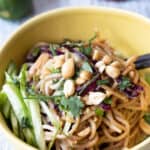
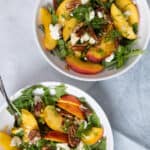
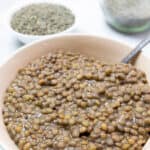
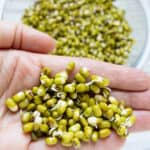


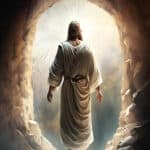
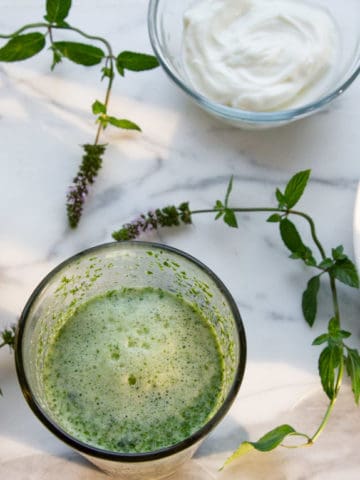
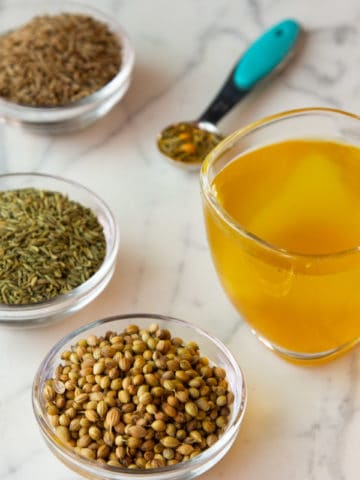
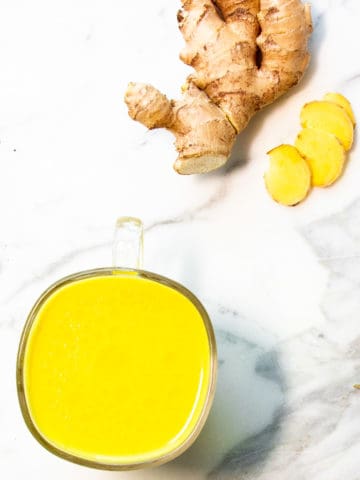

Amit Pathania
HI Andrea,
The Vedic ghee is not made from cream but from curd . and there are very strict guidelines to be followed for the same.
which include source of milk -breed of the cows.
and the process of making curd not even yoghurt.
use of earthen pots to make curd.
the method of churning which is called bilona.
so making ghee from cream/ butter is a not the traditional Vedic/ spiritual way.
You need to get you fact right.
Andrea
Hi Amit, Thanks for your comment. I never said in the article the method of making ghee I shared was vedic, (despite talking about vedic traditions.) However, I have added clarification into the article after your comment as per your points, so thank you again for bringing this to my attention. —Andrea
Amaury
This is the best recipe for making ghee. A lot of recipes I have come across seem of be copies of each other with very few modifications. I do like the suggestion you made about buying the grass-fed and cultured butter. I have made ghee before, so it will be good to compare the difference from the typical butter I usually buy and this one. When I have made ghee, I usually get stuck on when it time to stop. One time I thought I went to far because it was golden brown, but it tasted good.
When I buy ghee, I buy it at my local Indian grocery store. I like buying it from there since it is Desi ghee. Ever since I read this post last year, I a crazy seed was planted in my mind, to do the same as your mother-in-law, make ghee from raw milk. Here where I live, there is only one farm that does sell raw milk. Maybe one day. hahahha
Andrea
Thank you for this. It is so nice to be able to help in this way. I am touched that you were inspired, and you were also right to recognize that golden brown makes the best ghee. Recently I went the extra mile and made ghee from heavy cream that I cultured into yogurt, then turned into butter, then turned into ghee. I followed the recipe from Divya Alter, a very, very good Ayurvedic chef, and it did make beautiful ghee. Here's that link. You'll like her too. Take care, and keep in touch. 🙂 http://divyaalter.com/recipes/cultured-ghee
Ananda
I love the photographs in this post! I can't wait to make my first batch of ghee 🙂